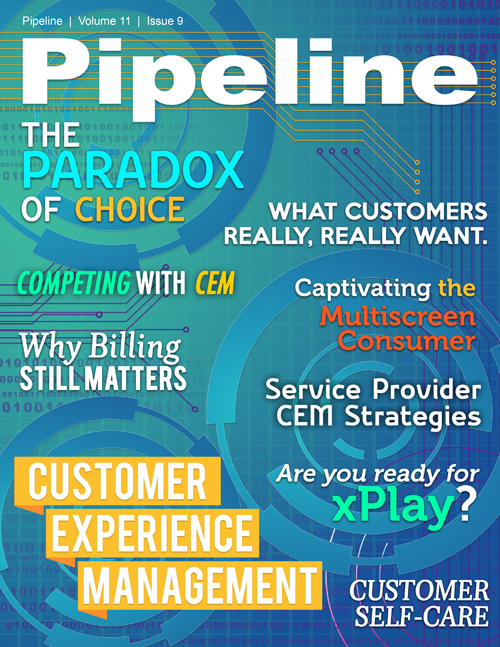What customers really, really want
By: Jesse Cryderman

For years, communications service providers (CSPs) have been trounced for delivering poor customer experiences. Today, they’re in the midst of changing their ways, and it’s not just lip service. In fact, customer experience management (CEM) is the new competitive battleground, and success in this arena will likely determine which service providers remain relevant and profitable in the years to come.
CSPs are heavily investing in solutions that improve metrics like Net Promoter Score (NPS) and reduce churn rates. CEM has become so pervasive in telecom that “many CSPs are now linking executive compensation and/or bonuses to improved customer experience scores,” wrote Greg Owens, Senior Director, Customer Experience Solutions Marketing, Alcatel-Lucent, in a recent blog post.
The CEM solutions and strategies are having a tangible impact. In the Forrester Customer Experience Index 2014, experience scores from ISPs, TV service providers, and wireless carriers, which have traditionally been at the bottom of the barrel, “shot up from 2013 levels".
All that is fine and dandy, but what does it mean for the customer? How are customers choosing their provider, and what makes them stay and become an advocate or leave and become a detractor?
How important is the network?
Network coverage and performance metrics are still very closely correlated to the highest-rated customer experiences and lowest churn, and network investments can be a smart move for CEM.
In Europe, lack of mobile data coverage is the primary frustration among customers, according to research commissioned by Actix, an Amdocs company. “The mobile experience is as much about reliability as speed. Whilst operators are rolling out super-fast LTE networks, most subscribers are still using the networks for relatively low throughput data tasks like web browsing and social networking. This research suggests that improving data coverage and capacity is more of a priority to subscribers than faster speeds,” wrote Neil Coleman, Director of Global Marketing at Actix.
Going the distance: CEM impact of the last mile
A chain is only as strong as its weakest link, and the same can be said for a network. Investments in traffic management and backbone won’t be sensed by a customer with crusty cables. The quality
of the last mile cannot be understated, nor can the wide variance of last-mile even in the same neighborhood.
For example, in Chicago, the building I live in has more consistent quality of service over DSL than cable. Because uninterrupted connectivity is critical for my profession, I chose to switch to a bundle from AT&T U-Verse. However, a friend down the street had the exact opposite experience.
“I’ve had U-verse for a little more than two years and, while I like the DVR functionality and quality, especially the ability to schedule recordings from my iPhone and to record more than one channel at a time (With AT&T U-verse you can record three shows at once while watching another), my Internet speeds were horrible, both downstream and upstream,” said Eric Ruder, a journalist living in Chicago. “I even pay extra for faster service, but I don’t think that has made any difference. Sometimes, it’s just too painful to watch a YouTube video or the quality on Netflix and Hulu is lowered so the stream isn’t constantly interrupted. Blech. So now I’m considering a switch to Comcast, which will be more expensive, but should have significantly faster internet speeds, which is pretty important for me since I work from home most days.”





















